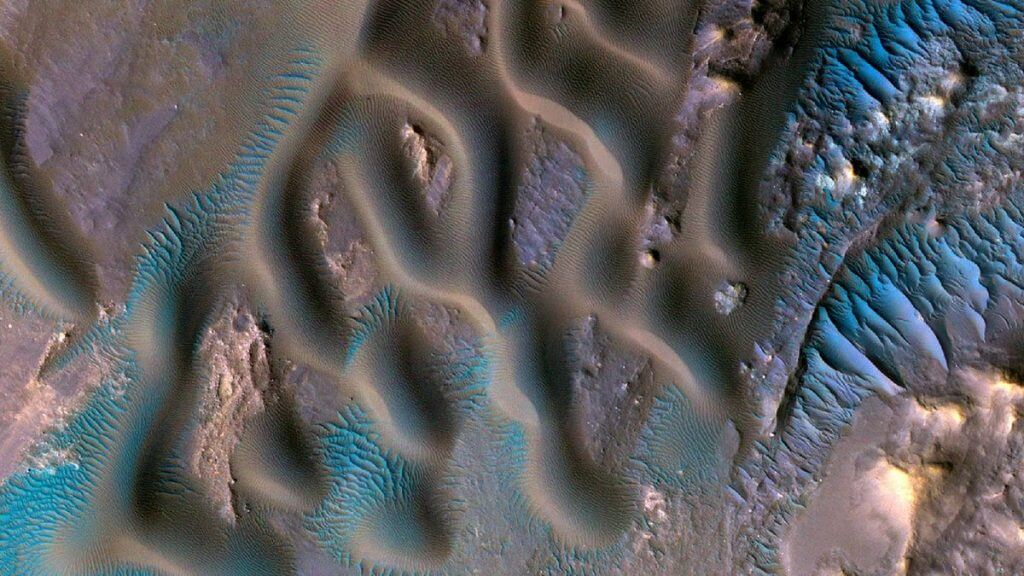
Strange Mars dunes reveal where the wind blows on the Red Planet (Image Credit: Space.com)
NASA’s veteran Mars Reconnaissance Orbiter captured a stunning image of a Martian dune field that reveals intricate details that might help scientists learn more about weather patterns in the Red Planet’s past.
The image, which is in false color, captures an area inside Gamboa Crater, a large impact basin near Chryse Planitia north of Mars‘ equator. The blue coloring is a result of image processing designed to accentuate the dune field’s complex features, including tiny ripples that line the tops of the larger dunes.
The tiniest dunes captured in the image are spaced only several feet apart when measured from crest to crest, NASA officials wrote in a statement (opens in new tab). These small ripples group into larger sand waves, about 30 feet (9 meters) apart, that radiate outward from the dunes.
Related: Stunning new Mars photos explore the solar system’s largest canyon
The roughly parallel larger, brighter features in the image are the so-called “Transverse Aeolian Ridges,” or TAR, which are covered with very coarse sand, according to the statement.
“The mega-ripples appear blue-green on one side of an enhanced color cutout while the TAR appear brighter blue on the other,” NASA officials wrote. “This could be because the TAR are actively moving under the force of the wind, clearing away darker dust and making them brighter.”
By studying images like this one, scientists can learn about the direction of the wind that created those dunes in the distant past. The diversity of features reveals the relationships and differences between them. The images could help scientists infer the properties of the material these structures are made of, telling the story of their formation.
The Mars Reconnaissance Orbiter, which took the image earlier this year, has been monitoring Mars more than 16 years. The probe, which was designed to search for evidence of past water on the now-arid Martian surface, proved that the planet may once have been habitable. The orbiter also serves as a data relay for NASA’s Martian rovers Curiosity and Perseverance, and helps mission teams select landing sites for new missions.
Follow Tereza Pultarova on Twitter @TerezaPultarova. Follow us on Twitter @Spacedotcom and on Facebook.





